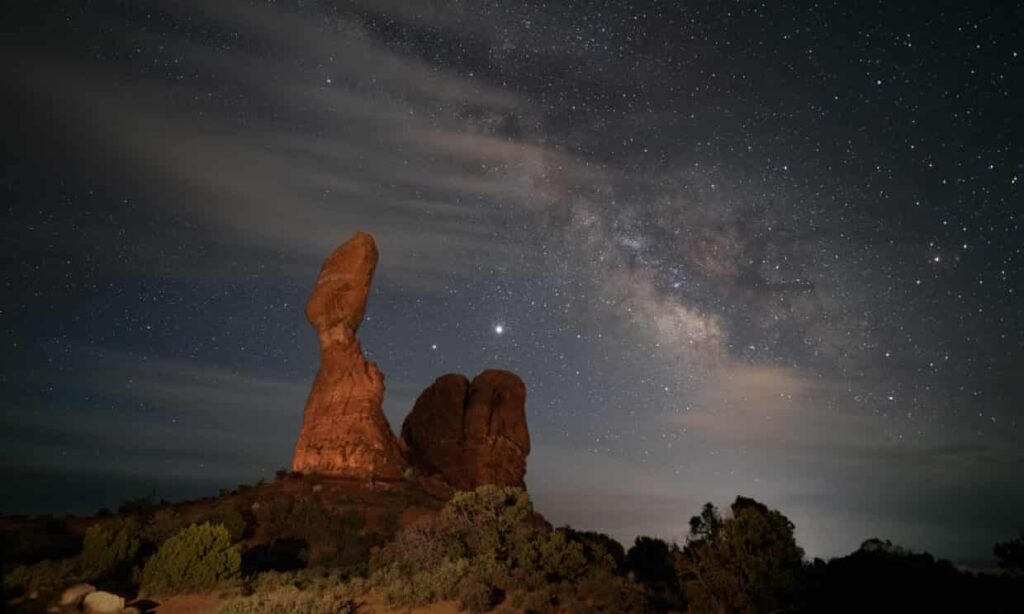STARGAZERS ARE IN for a rare treat in the days just head of Christmas, as two of the solar system’s brightest planets, Jupiter and Saturn, engage in a celestial dance that will bring them within planetary kissing distance in the evening sky.
The moment of closest approach arrives on December 21—the winter solstice for those in the Northern Hemisphere and the start of summer for those in the Southern Hemisphere. The two planets will appear closer together than at any time in almost 400 years in an event known as a great conjunction.

But there’s no need to wait to get out there and start looking. “It’ll be infinitely more fun to watch throughout the month, rather than just going out on December 21,” says Laura Danly, curator of the Griffith Observatory in Los Angeles. “You’ll see those two lights, Jupiter and Saturn, getting closer and closer and closer, until on the 21st, they’re just one-tenth of a degree apart”—about a fifth of the width of the full moon as seen in our sky.
That’s pretty close, considering you can cover the entire lunar disk easily with an outstretched thumb. Even so, most observers should be able to distinguish the two planets. “If your eyesight is good enough to drive, then you’ll be able to see that [Jupiter and Saturn are] two separate objects,” even at their closest approach in the sky, Danly says.
Near and far
Astronomers call such a close planetary pairing a conjunction. Jupiter-Saturn pairings occur about once every 20 years, and because of their rarity are referred to as “great conjunctions.” By comparison, conjunctions involving the inner planets Mercury and Venus—with each other or with one of the outer planets—are much more common, occurring many times per decade.
The further a planet is from the sun, the slower it moves across our sky—and Jupiter and Saturn are the two most distant planets that can be readily seen with the unaided eye. (Saturn, more distant than Jupiter as well as physically smaller, is the fainter of the two.) Jupiter completes one revolution around the sun every 12 years, while Saturn takes about 30 years—a celestial playbook that results in their meeting in the sky every two decades.
National Geographic



